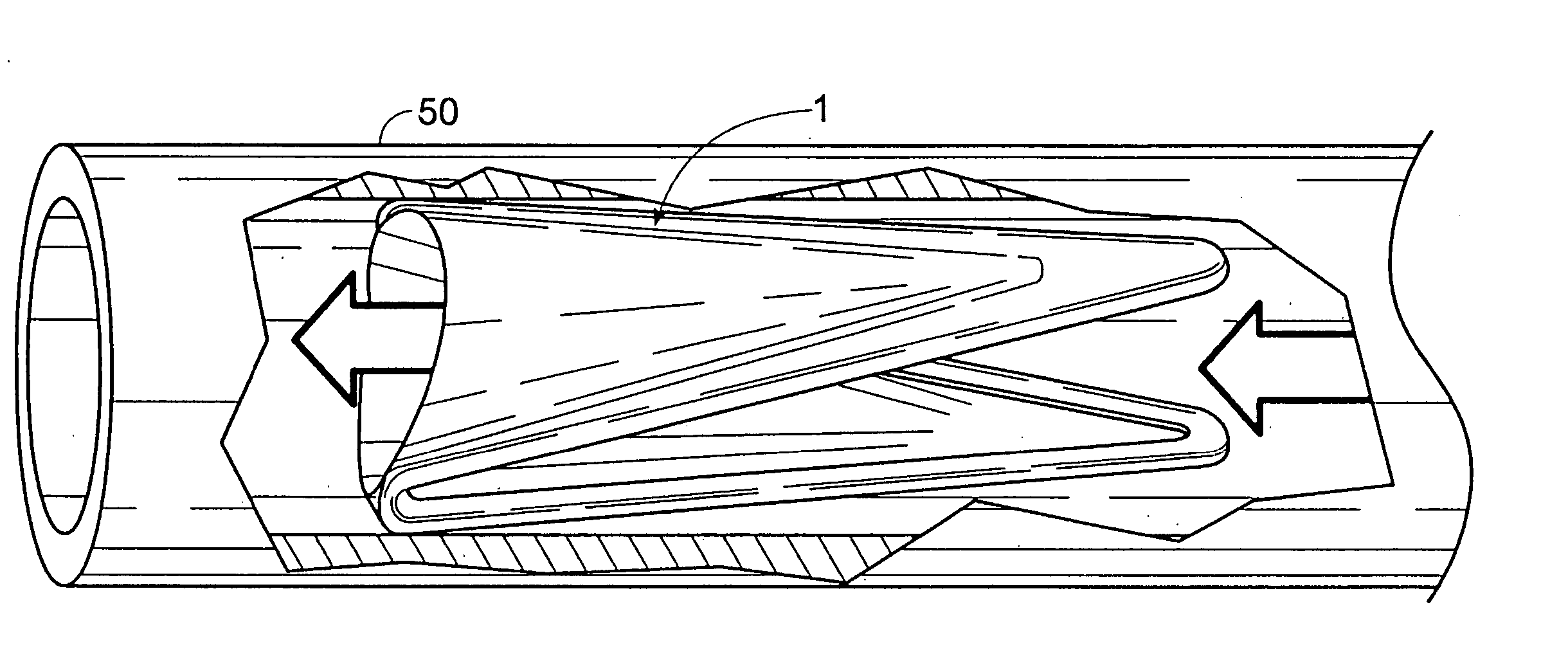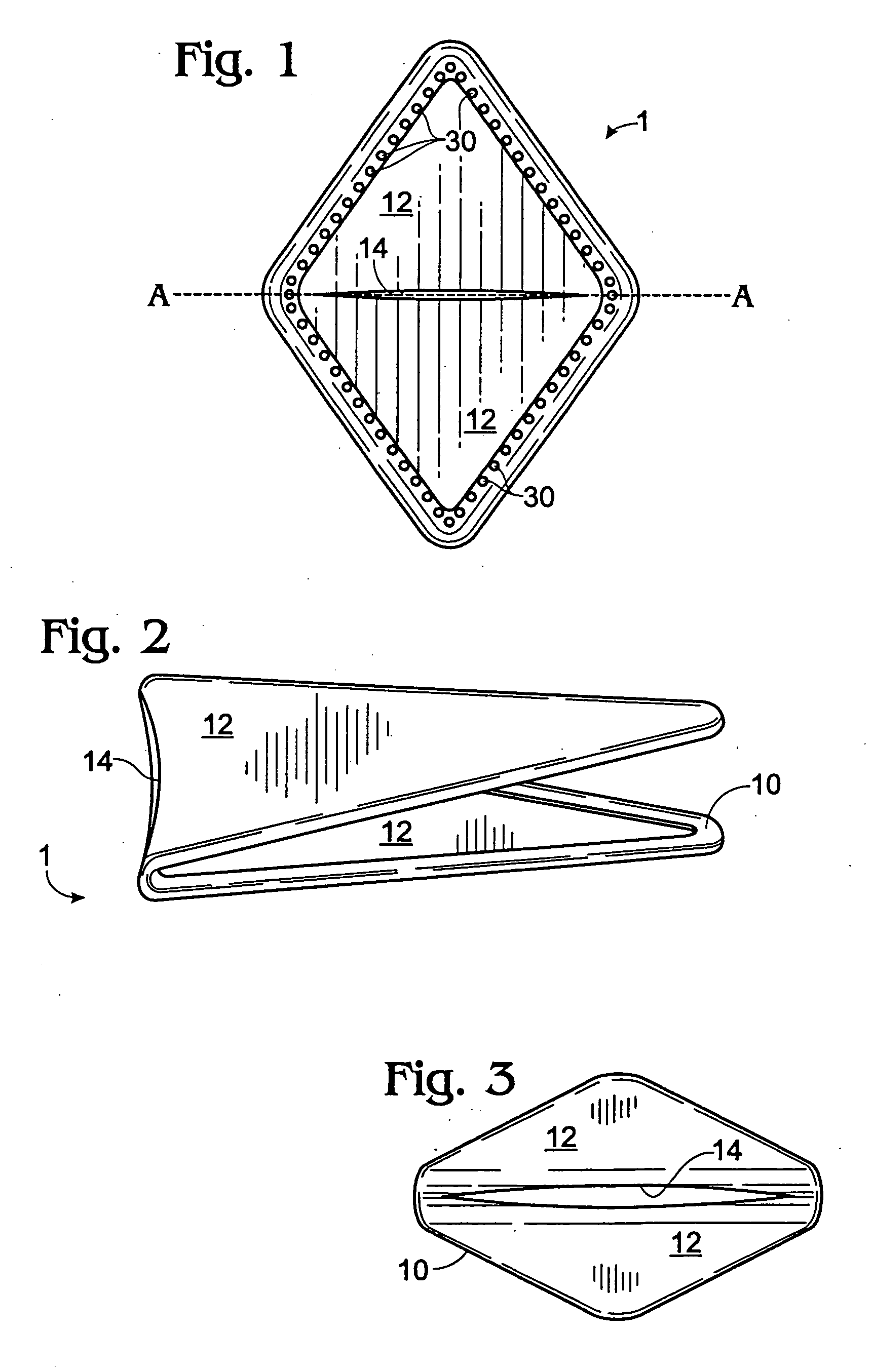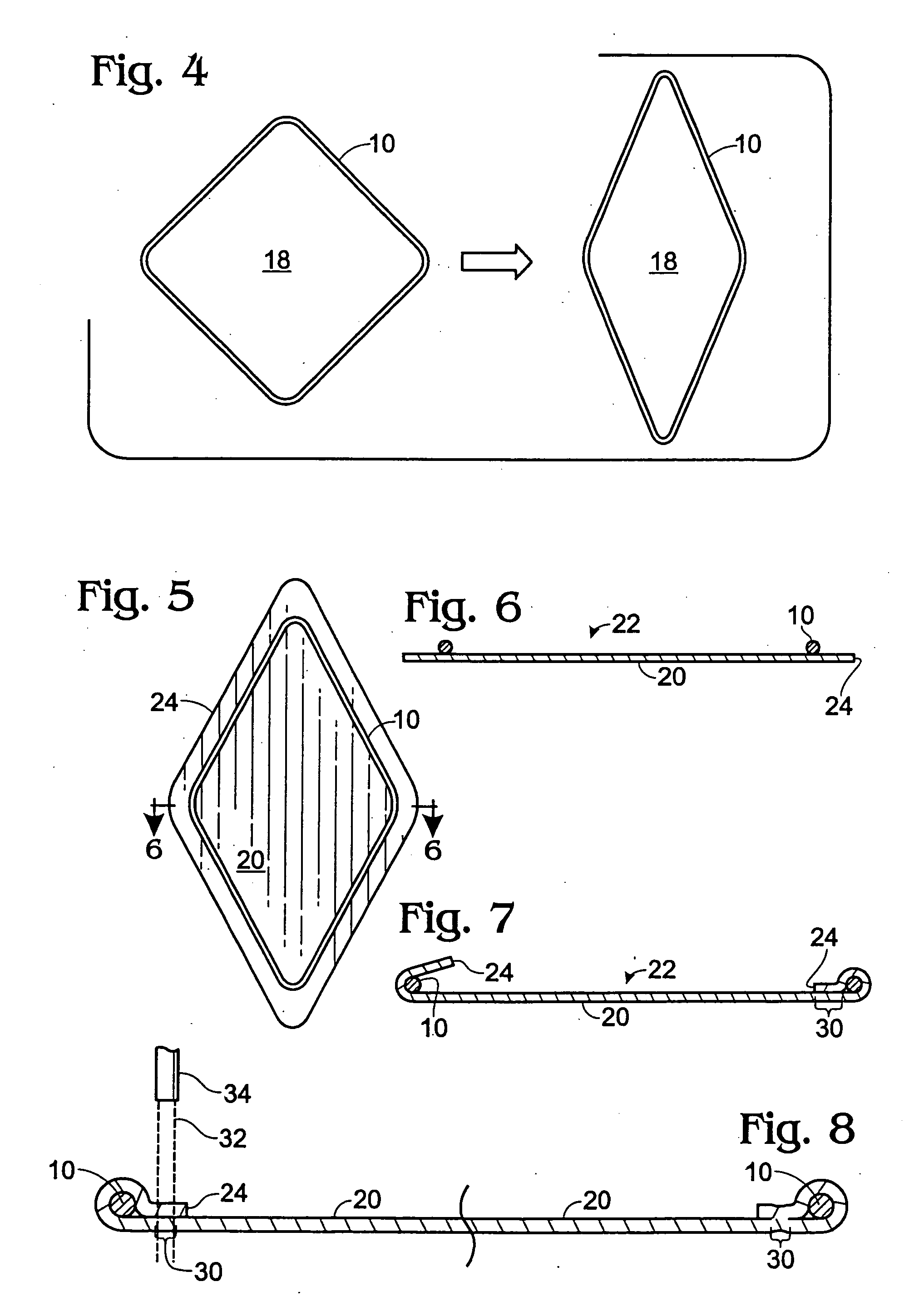Method for suturelessly attaching a biomaterial to an implantable bioprosthesis frame
- Summary
- Abstract
- Description
- Claims
- Application Information
AI Technical Summary
Problems solved by technology
Method used
Image
Examples
Embodiment Construction
[0031] A valve graft 1 according to the present disclosure is shown in FIGS. 1-3. The valve graft generally comprises a valve frame 10 defining a valve frame open area (18 in FIG. 4). The open area is spanned by a pair of valve flaps 12 constructed of a biomaterial, discussed below. The valve flaps have positioned therebetween an aperture 14.
[0032] The valve frame 10 is preferably a closed loop and is commonly constructed of fine-gauge metal (e.g., 0.014 inch diameter), although other materials can be effectively employed. For example, the valve frame can alternatively be made of a synthetic material such as TEFLON (polytetrafluoroethylene). As well, the valve frame can be fabricated of a resorbable or biodegradable composition.
[0033] In one embodiment, the valve frame 10 is a memory wire formed into a desired shape. As illustrated herein, the valve frame is rhomboidal, although other shapes can be utilized to effect a variety of valve shapes and dimensions.
[0034] Such a shape me...
PUM
 Login to View More
Login to View More Abstract
Description
Claims
Application Information
 Login to View More
Login to View More - R&D Engineer
- R&D Manager
- IP Professional
- Industry Leading Data Capabilities
- Powerful AI technology
- Patent DNA Extraction
Browse by: Latest US Patents, China's latest patents, Technical Efficacy Thesaurus, Application Domain, Technology Topic, Popular Technical Reports.
© 2024 PatSnap. All rights reserved.Legal|Privacy policy|Modern Slavery Act Transparency Statement|Sitemap|About US| Contact US: help@patsnap.com










